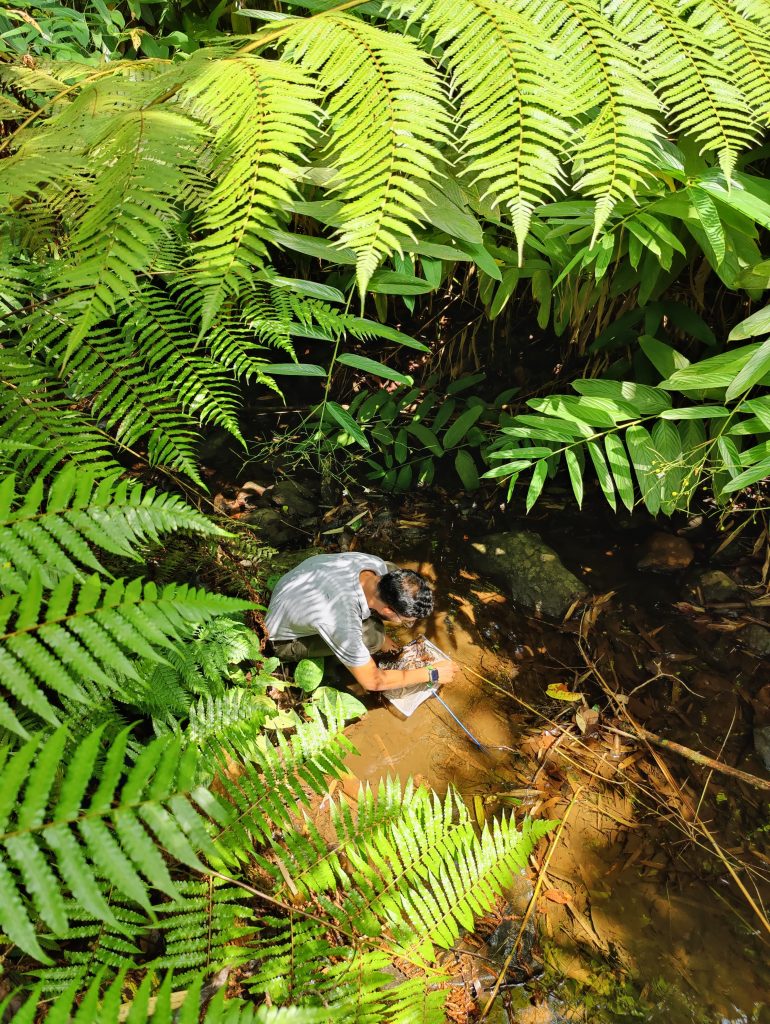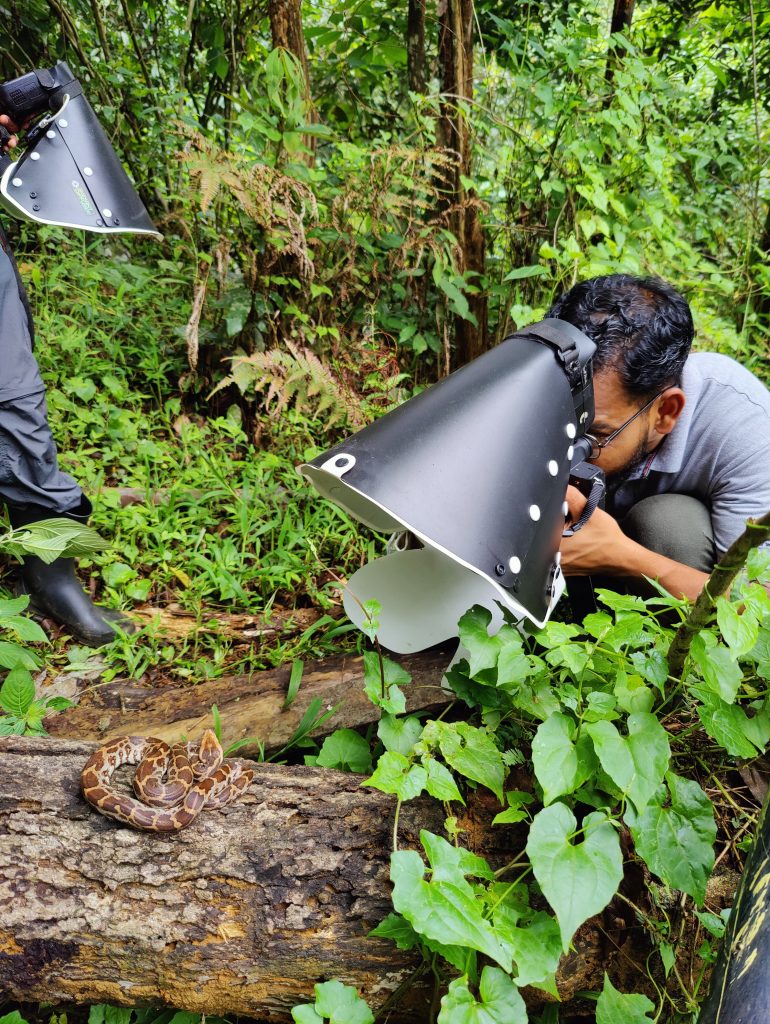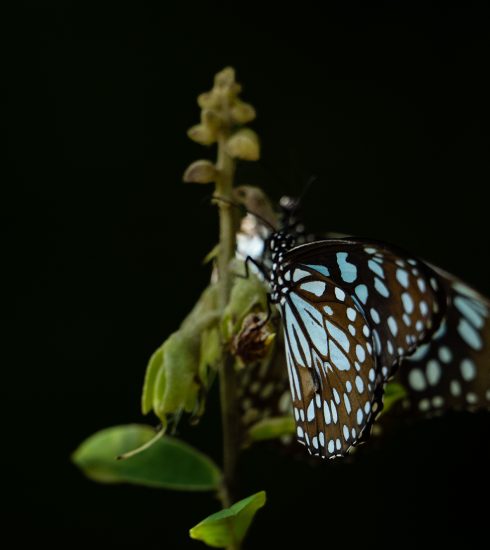Interview with Umesh Pavukandy

Q: Can you introduce yourself?
A: My name is Umesh. I’ve been working as a naturalist for the past 10-15 years, focusing on various taxa from reptiles and butterflies to bats and a few mammals. My early interest has always been reptiles, largely because I was born and raised in a place that’s a haven for them—Balusheri in the Calicut district.
Q: What sparked your interest in reptiles?
A: Growing up, I saw many people in my community killing snakes due to a lack of education about them. This motivated me to learn more. Around 17, I started understanding that most snakes are harmless and began educating others. I even started rescuing them.
Q: How did you start rescuing and learning about reptiles?
A: It was a self-taught journey. I received no formal training but learned gradually through reading and watching documentaries. Shows like Austin Stevens’ and “Man vs. Wild” were big influences. I began imitating what I saw, and soon my village started calling me whenever they saw a snake.
Q: Did you consider making this a career?
A: Yes, but coming from a background with limited opportunities in wildlife, it was challenging. I tried to find opportunities for wildlife studies in India, but they were scarce and often expensive. Eventually, I met friends working in reptile taxonomy through contacts, which fascinated me.
Q: Can you tell us more about your work in reptile taxonomy?
A: I teamed up with a friend named Vivek, a MSc student in Wayanad then. We traveled extensively through the Western Ghats, especially in Wayanad and Calicut, searching for new species of lizards, frogs, and snakes. We’ve published around 10-12 papers describing new species. So for that work I’ve traveled extensively through the ghats.
Q: How did your focus shift from rescuing to conservation?
A: I realized that rescuing snakes alone isn’t enough; we need to provide spaces for their conservation. This involves assessing the biodiversity of an area and notifying the government or authorities to protect it. My focus broadened to understanding how various species can sustain a piece of land. Rather than focusing on individual animals, I aim to assess the overall biodiversity of an area and advocate for its protection. This holistic approach helps ensure that all small species can thrive sustainably.
Q: How do your parents feel about your lifestyle and choices?
A: My parents are okay with everything because they trust my decisions. I’ve been given a lot of freedom, which is quite rare. After my degree, I joined an IT company in Bangalore, but could not bear the corporate brunt, so I decided to pursue my passion. I took a break, earned some money from work, and traveled alone across North India for one and a half years.I traveled mostly in the northern side of India, particularly around Haridwar, but not in the Northeast. This journey inspired me a lot. After my travels, I got an opportunity to work as an environmental officer at Kalakad Mundanthurai Tiger Reserve (KMTR).
Q: Did you have a background in biology for this role?
A: No, I didn’t have a degree in biology, which was the actual qualification requirement. However, they selected me based on my other qualifications and experiences.
Q: How long did you work at KMTR?
A: I worked there for seven years, a golden period in my life.
Q: What was your experience working in the field like?
A: I often worked alone, traveling around KMTR on a bike. I preferred to observe my surroundings and take detailed field notes instead of focusing on photography. I have a very good collection of field notes that served as valuable data and a learning resource.

Q: Can you tell us about your initial connection with the naturalist David Raju?
A: David Raju, the present General Manager at Wayanad Wild and a renowned naturalist, used to visit the place I frequented. Through our interactions, we developed a strong connection. We were also linked through Dr. Anil Zachariah, a researcher I got in touch with after meeting David. Dr. Anil was instrumental in connecting me with David, and it was David who suggested I guided me to my present role at CGH Earth.
Q: How did your journey with CGH Earth begin?
A: My journey with CGH Earth started somewhat unexpectedly. I worked there for two fantastic years before getting transferred to Coconut Lagoon. I joined here in 2018.
How was your initial experience after joining CGH Earth?
A: We had a lot of foreign guests during that time, which was a great experience for me. Initially, I had some reservations about working in a resort in the wild. I had a prejudice that such establishments might not care about conservation, as many hotels in wild setups often end up damaging the environment. However, when I joined CGH Earth, I understood their core ethos and realized that this was the right place for me.

Q: What changed your perspective about working in a resort in a wild setup?
A: My perspective changed when I saw that CGH Earth genuinely adhered to its vision and mission statements. Unlike many companies that merely have these statements for the show, CGH Earth lived by them. This commitment to their principles made me stay. It became clear to me through their actions. They invested in having naturalists and natural education for guests. This investment showed their dedication to education and conservation rather than just profit. For example, Wayanad has numerous homestays and resorts, but very few, if any, have naturalists. CGH Earth stood out by prioritizing education and awareness about nature.
Q: What impact does tourism have on conservation, in your opinion?
A: Tourism in the wild can be a double-edged sword. While it’s true that every step we take might disturb the environment, tourism also brings awareness about conservation. The key is to balance with education and responsible practices. CGH Earth seemed to understand and implement this balance well. The leadership has impressed me with their deep understanding and wisdom about conservation. Every conversation revealed the profound knowledge and commitment towards the company’s ethos. This reinforced my belief in the company’s dedication to its vision and mission.
Q: Can you share an example of CGH Earth’s commitment to conservation and education?
A: One notable example is their decision to hire naturalists and invest in natural education. This decision shows their commitment to conservation and guest education, even though it doesn’t directly generate revenue. It’s a clear indicator that CGH Earth values long-term sustainability and education over a compromised vision.
Q: What keeps you motivated to continue working in this field?
A: The alignment of my values with CGH Earth’s vision and mission keeps me motivated. Their genuine commitment to conservation and education, along with the opportunity to work with knowledgeable leaders like Michael, inspires me to continue contributing to this field.
Q: What is unique about CGH Earth’s approach to training naturalists?
A: One of the most remarkable aspects of CGH Earth is their dedication to providing systematic and professional training for naturalists. Despite being an experienced naturalist, I realized that my approach was not as structured as it could be. CGH Earth organized training sessions with expert trainers from North India, like Harsha and Payal, who have authored a book on naturalist training. Their training provided a well-defined system for guiding and naturalist behavior, which significantly improved our skills.
Q: How did the training sessions impact you and your colleagues?
A: The training sessions were incredibly impactful. We had an intensive 10-day training session during the COVID period, followed by another 12-day session at Spice Village, Thekkady. These sessions enhanced our guiding techniques and overall approach to interacting with guests. The investment CGH Earth made in these trainings significantly improved our confidence and effectiveness as naturalists.
Q: Can you share an example of how the training improved your skills?
A: After the training, there was a noticeable improvement in how we conducted tours and interacted with guests. The structured training provided by CGH Earth ensured that we were not just knowledgeable but also able to communicate our knowledge effectively to guests, enhancing their experience and understanding of the natural environment.
For instance, I previously worked at well-known resorts, where training opportunities were limited. This investment reflects CGH Earth’s genuine commitment to their vision and mission. They prioritize education and conservation over immediate profits, which is evident in their willingness to invest in the continuous training of their naturalists. This approach not only enhances the quality of service provided to guests but also ensures that the company’s ethos of conservation and education is upheld.
Q: How do you feel about your future with CGH Earth?
A: I feel optimistic and motivated about my future with CGH Earth. Their commitment to training and education aligns with my personal values, and I am confident that with the skills and knowledge I have gained, I can contribute more effectively to the company’s mission. The continuous support and investment in our growth make CGH Earth an ideal place for anyone passionate about conservation and naturalist work.






